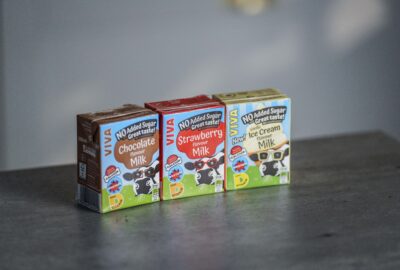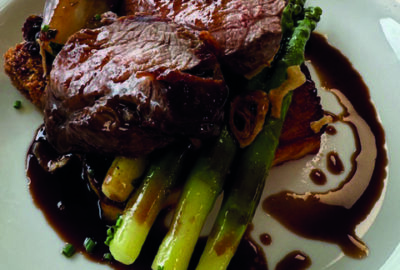With a tough year ahead as the cost-of-living crisis grips and mortgage rises hit, gardening and growing can be a huge benefit to the health of your team and your business. Following our 2023 reader’s survey, it was great to hear that we had inspired many of you to get growing last year.
This year, we want to encourage even more of you to get digging and celebrate your kitchen-garden achievements no matter whether you are a school, hospital, care home, café, pub or restaurant.
Get ready for Spring
A good compost can make a huge difference to the productivity of your vegetable patch or growing pots. It helps you make the most of any food and garden waste and it’s easy to produce yourself, while improving the soil structure, biodiversity and water-retention capabilities of your soil.
With spring on the horizon, now is a great time to start composting. In order to speed up the process and provide the perfect environment, a compost bin is a valuable tool and makes it all less messy. The size of the compost bin will be determined by how much space, garden and food waste you have but generally the bigger they are, the more efficient they are.
Whether it’s a bin or pile, covering it will help retain heat, which benefits the good composting bacteria. Consistency is key so avoid extreme changes in temperature and moisture by sighting the bin or heap in a sheltered spot in the shade.
When it comes to what goes in, there are two types of materials – green and brown. A good rule of thumb is to use a brown to green ratio of 2:1. Green material provides the nitrogen and includes leaves, grass clippings, weeds, dead crops and your plant-based kitchen waste. Brown provides the carbon and includes woodier waste such as shredded cardboard and paper, hedge clippings and dead stalks. A good mix and balance of ingredients is key – your compost shouldn’t be too smelly or slimy.
Air is crucial to the composting process so if your compost is too wet, it will take longer to break down as air can’t circulate. Too dry is no good either – it needs to be moist. Every couple of months make sure you turn your compost, for aeration, either by tipping out the bin and refilling or by forking. Using these basic tips, you should have compost within 6 months to a year but if the conditions are right, maybe even sooner. There are plenty of videos for other techniques on YouTube if you want to get serious about composting.
Your finished mature compost should look and feel like soil with a woodland smell. Sieve your soil to pull out any part un-composted scraps that can be thrown back into the bin for next time.
Stir it up Growing Gang
To help build the excitement ahead of early spring when the work needs to start in earnest, we’re providing an added incentive to get involved with the launch of our Stir It Up Growing Gang. Simply email us at the address below to become part of our growing community to receive:
FREE SEEDS – we will send you a special selection of herb and vegetable seeds for you to start sowing in the spring.
GROWING GRANTS – members will also have the opportunity to win £250 grants from the Foundation’s £1,000 pot to help with their growing endeavours in 2024.
To register as part of the gang and to submit your case for a grant, email stiritup@countryrange.co.uk
Beat the winter blues with foraging
While it is a slightly lean couple of months for foragers, it is a great time to be outdoors and there are still some goodies which are easy to find.
DANDELION
Easy to spot and find, filled with nutrients, versatile and tasty, dandelion is a fantastic ingredient to add a little sunshine to the plate in winter. The flowers have a honeyed twang and the leaves have a slightly bitter hit that can be balanced with a good dressing. Even the root can be dug up and used in soups and stews like you would any other root vegetable.
SOW THISTLE
There are multiple species with some having prickly leaves that make them less appetising. They are a relative of the dandelion with similar nutritional benefits. It has four times more antioxidants than red wine and twelve times more than black tea, plus is rich in essential fatty acids and minerals. Smooth Sow Thistle is a one of the most common and tasty. The leaves are best eaten and less bitter when young, which is about now, and they can be prepared like any vegetables, added to stir fries and stews.
NETTLES
Naughty nettles often get a bad rep for stinging children but they’re an underused ingredient on all our doorsteps. The first young nettle shoots arrive at this time, and this is the optimum time to eat them. They’re a great substitute for spinach. Just wash and wilt first before adding to soups, pies, stews and curries.
GORSE FLOWERS
Blooming during February, these flowers have a mild aroma and flavour of coconut. With prickly spines protecting, be careful when picking but they’re sublime for decoration or for bespoke cordials, syrups and homemade spirits.



